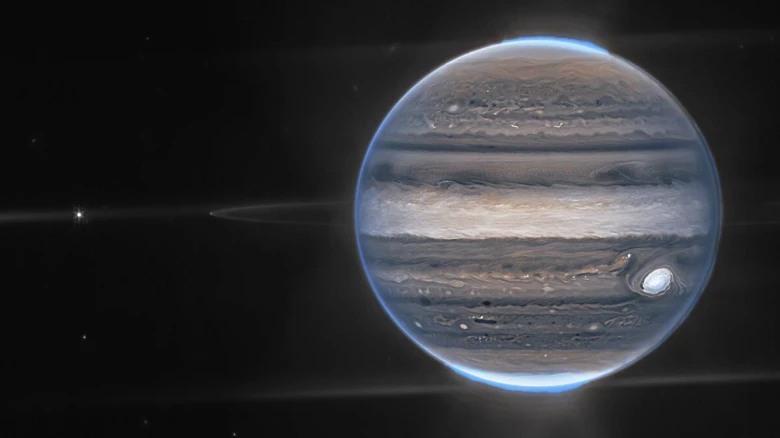Regional

The dynamics and chemistry of Jupiter, its rings, and its satellite system are all studied by our Jupiter system programme, which, according to Fouchet, is represented by this one image.
Digital Desk: The largest
planet in the solar system, Jupiter, has always had the same appearance. Most
of us recall the gas giant from our schoolbooks and encyclopaedias as a
yellowish-orange spherical. The most recent James Webb telescope operated by
NASA, however, has produced fresh photographs of Jupiter that depict the planet
in a totally different light.
The most recent infrared
photos of Jupiter provided by NASA show the planet in a greenish blue hue. The
photographs depict the planet in its entirety, including all of its
distinguishing features, such as the enormous storms, auroras, and regions of
extreme temperature. Look at the pictures below:
Planetary astronomer Imke de
Pater said in a press release, "We hadn't really expected it to be this
wonderful, to be honest." Thierry Fouchet, a professor at the Paris
Observatory, and De Pater, an emeritus professor at the University of
California, Berkeley, were the observers of Jupiter. Fouchet said it was
"really remarkable" that they could see details of Jupiter as well as
its rings, tiny satellites, and even galaxies in one image.
The planet's rings and moons
are among the many Jupiter features that are cleanly identified in a second
image published by NASA. The dynamics and chemistry of Jupiter, its rings, and
its satellite system are all studied by our Jupiter system programme, which,
according to Fouchet, is represented by this one image.
Processing the most recent
images of Jupiter
Images from the James Webb
telescope do not always arrive in the same format as what we see online, as
NASA notes in a blog post. Instead, scientists receive a set of data that was
recorded by the James Webb Space Telescope's light detectors. These data
fragments are then combined and processed by the STScI (Space Telescope Science
Institute) to create the images we see.
Judy Schmidt of Modesto,
California, a seasoned image processor in the citizen scientific community,
processed the most recent Jupiter photographs you just saw.
For the second image, the
one showing the rings and moons, Schmidt also worked with co-investigator
Ricardo Hueso, who is based in Spain and studies planetary atmospheres at the
University of the Basque Country.
Leave A Comment